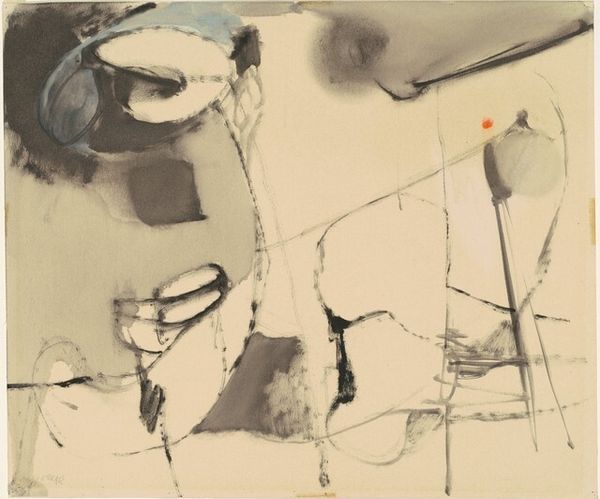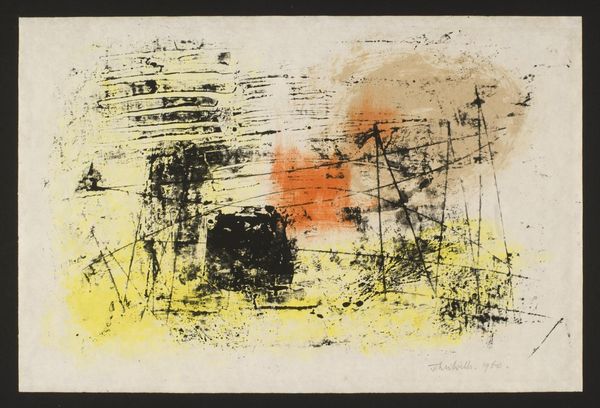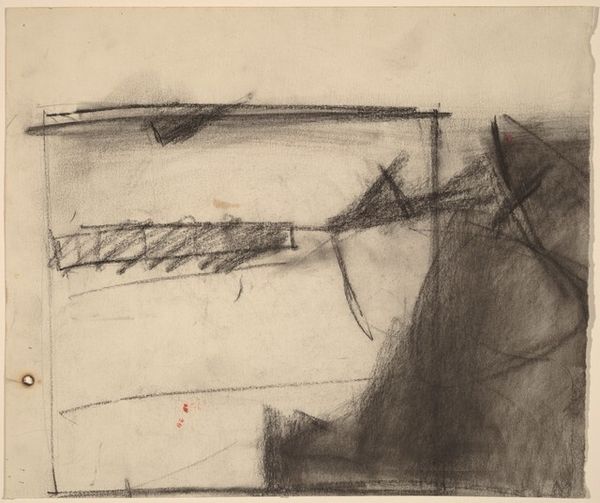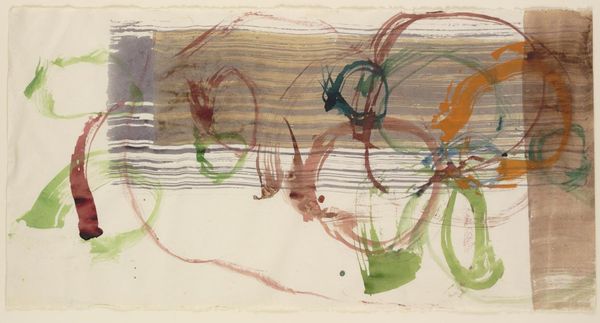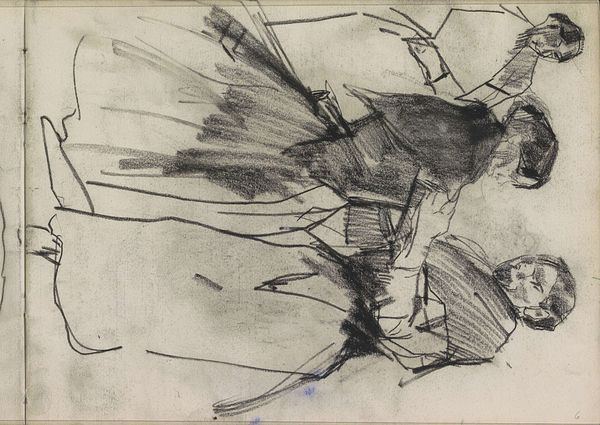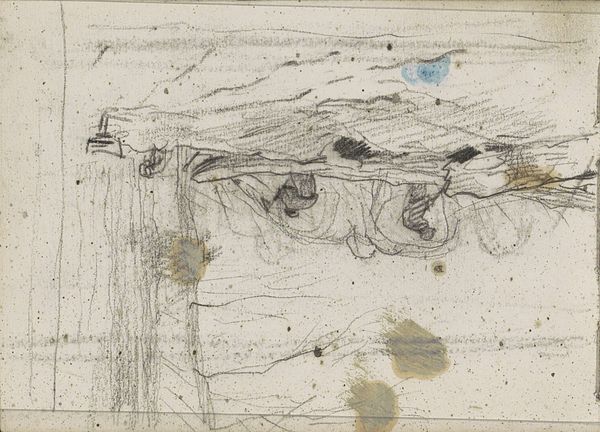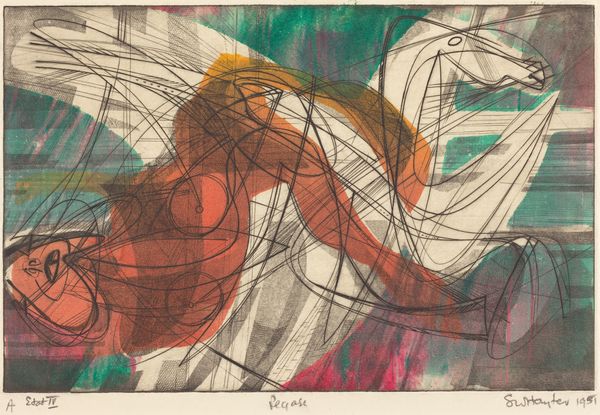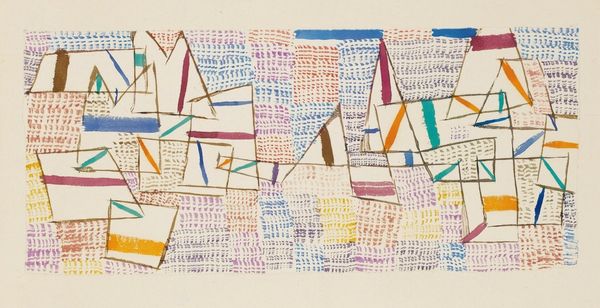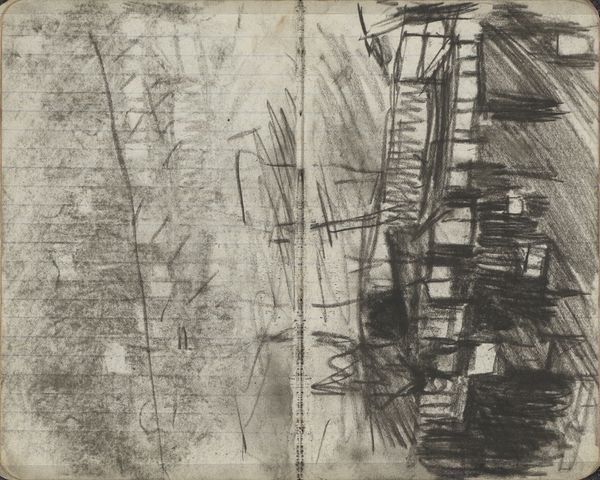
Dimensions: overall: 31.5 x 49.3 cm (12 3/8 x 19 7/16 in.)
Copyright: National Gallery of Art: CC0 1.0
Curator: Immediately, it feels ephemeral, like a memory fading at the edges. Is it the muted color palette, the unfinished lines? It projects a real sense of wistful, dreamlike abstraction. Editor: This is "Argo," a watercolor and ink drawing created in 1951 by Jacob Kainen. Considering Kainen’s early work, it’s tempting to position this piece within the trajectory of American abstraction, especially given the socio-political context of the post-war era. Curator: Post-war anxieties made manifest? Interesting. I see those tentative strokes, a boat maybe? Hints of natural elements—but the lack of definition almost conveys uncertainty. Were societal structures so shaken that Kainen couldn’t commit to clear forms? Editor: The political landscape absolutely permeated artistic expression. Artists sought to redefine what representation itself could mean. But Kainen's biography plays a huge role too. He was deeply engaged in union organizing at the time. The image could be viewed through that lens; ideas surrounding progress, societal movement, perhaps? It wasn’t unusual for him to work politically into his aesthetic experimentation. Curator: So you are suggesting we understand "Argo" beyond mere aesthetics? Is Kainen commenting on the labor movement's often-tenuous position in a rapidly changing world, mirroring those delicate lines threatening to disappear? A watercolor could certainly convey precarity effectively. Editor: Precisely. Also remember his Jewish identity—likely Kainen’s cultural consciousness pushed back against dominant WASP culture. Curator: I like how you bring intersectionality into this; Kainen’s multi-layered identity complicates a singular interpretation. It also broadens the understanding. The "boat" suddenly isn't just a boat; it becomes a symbol of refuge, or perhaps struggle? Editor: That’s the key, I think: holding those tensions in place. This drawing isn't simply pretty. It engages with the difficult questions. Curator: Ultimately, seeing this artwork allows us to think about how individual identity meets the large social forces to make meaning of their contemporary conditions. Editor: Yes, the artwork makes one want to return, searching for additional entry points for how it speaks of the moment and the long tail that connects its concerns to those in the present day.
Comments
No comments
Be the first to comment and join the conversation on the ultimate creative platform.
